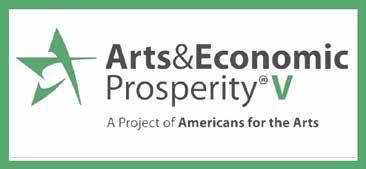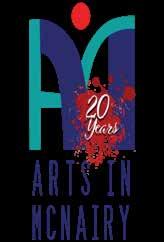
4 minute read
CREATIVE ECONOMY
By Shawn Pitts
Money is never the primary motivation for creating art. No one picks up a paint brush or sits down at a piano the first time with dreams of fame and fortune.
Advertisement
Most people are attracted to the various artistic disciplines because they allow individuals to satisfy their need to create or effectively express themselves. But that’s not to say there is no connection between artists and the economy.
The vast majority of artists, like athletes, will never go pro. But many of them will continue their creative pursuits for a lifetime as hobbyists. A certain percentage of these will achieve a level of skill that is appreciated by their neighbors creating economic opportunity.
Think of the potters, textile artists or metalworkers who supplement their income peddling their wares or the band whose members work day jobs but pick up extra money playing music on the weekends. It is rarely expressed in economic term, but these and many others engaged in similar creative activities, are essentially small business owners.
They generate income for themselves as well as the venues who hire them to play music or the retailers who purchase and resell their art. They spend their earnings locally, buy supplies from other small business owners, and pay into the county and city tax bases.
Taken together they are a significant segment of our local economy. Similarly, when local people organize to create opportunity for artists, the economic impact is amplified and the community is the winner.
First, and most importantly, our talented friends and neighbors are offered creative outlets that can be enjoyed by the public. Think of the plays, musicals, concerts, art showings, exhibitions and other cultural programs that draw literally thousands of people to the Latta every year.
Think of the Rockabilly Highway Murals and Trail of Music Legends in downtown Selmer and the annual plein air painting festival in Adamsville which draw cultural tourists to our county in droves.
These programs enhance local livability, build positive identity and good will within our community, and engender positive associations among visitors. But they also produce an often under-appreciated financial windfall for the entire region.
In 2016 The Tennessee Arts Commission invited Arts in McNairy to participate in a national survey conducted by Americans for the Arts to determine the impact of arts activity on local economies.
The individualized findings for McNairy County were astonishing. During the survey period hundreds of visitors and locals were asked a variety of questions to determine spending patterns connected to arts events.
That data was combined with budget figures from organizations like Arts in McNairy who invest heavily in community arts programs.
In the final analysis, McNairy County’s creative sector is responsible for generating hundreds of thousands of dollars in economic activity, pouring money into the tax base, creating jobs and enhancing prospects for industrial recruitment and retention.
Local arts programs attracted thousands in outside revenues and reduced spending across the county and state lines, keeping valuable resources in the local economy.
In fact, for every dollar invested in arts events, audiences put nearly $13 back in local cash reg isters. That’s nearly ten times the national aver age. As it turns out, the lo cal arts scene is far from a trifle, it’s a crucial part of our economic diversity and vitality.
Simply stated, the arts are just good business for McNairy County. So the next time you order a ticket for a lo cal show, or purchase a piece of art from a local artist or maker, think of it as an investment in your community.
You will be getting a one of a kind original; you will be supporting local creativity; and you will be building a sustainable creative economy. There’s no downside in any of that.v






